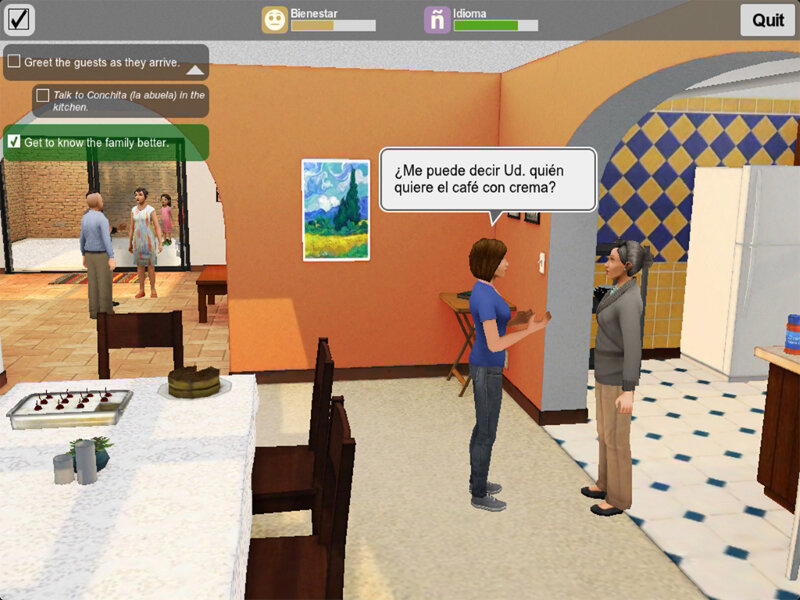Practice Spanish: Study Abroad
I was a game and learning mechanics designer for Practice Spanish: Study Abroad, a language-learning game distributed by McGraw Hill and created by Muzzy Lane Software. My job was to work closely with our subject matter expert (SME), and our artists and programmers to create engaging game mechanics that supported learning introductory Spanish.
The Project
McGraw Hill wanted a fun, immersive game that would accompany their Spanish textbook. Ideally, the game could be assigned as self-assessing homework. The game needed to assess both Spanish comprehension and grammar.
The Challenges:
The game needed to be self-assessing. Comprehension needed to be assessed by how well the student completed in-game tasks, and grammar would be assessed with traditional fill-in-the-blank exercises.
The game needed to be adaptive, meaning that the difficulty scaled up and down based on how well the student was performing.
The SME wanted to tell a story about a student who studied abroad in Colombia and had both mundane and magical experiences based in Latin American folklore, where magical realism is a key feature. This story needed to be expressed using game mechanics that would be readily understood by the student player.
The Solution
We wanted to create an open world for the student to explore, and be able to use language contextually in order to gain experience in different situations. By performing the tasks, the student would show mastery of the language concepts. Additionally, the locations would
The student would walk around the maps, interacting with the elements in any order, and gather the information necessary to complete tasks.
The student would be scored on a few different parameters that varied between levels in order to account for the significant differences in content between the levels. The parameters included well-being, money, and language, and would change based on how well the player could navigate the situation in Spanish. The student’s scores and the target scores would be reported to the instructor, since the goals changed for each scenario.
Early scenario brainstorm. The scenarios were often complex webs of choices and possibilities that allowed a player room to explore on their own terms!
Completed house party scenario - the upper left area had goals to complete, and the player moved around by clicking the environment. NPCs (non-player characters) could be talked to again and again in any order to get the information needed to complete the task.
The completed game was a success, and included over 10 levels and 5 maps, including a huge central plaza, underground tombs and an authentic-feeling Colombian home. There were countless cultural details throughout the game that we worked hard to integrate, with everything from the sinister La Llorona and cheese-filled pupusas. McGraw Hill has used this game since 2014 for its introductory Spanish courses.





